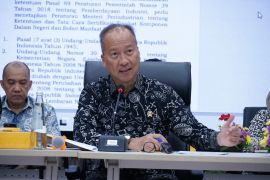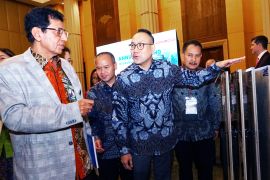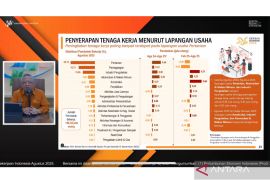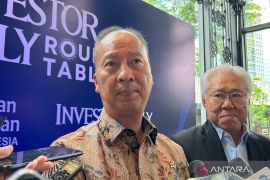"For these achievements, Indonesia, with a 20.5 percent portion of contribution, is ranked fifth in the world among G20 countries," Hartarto stated through a statement in Jakarta on Wednesday.
According to data from the United Nations Industrial Development Organization (UNIDO), Indonesia is also ranked 4th in the world among 15 countries whose manufacturing industry`s contribution to gross domestic product (GDP) is above 10 percent.
"We often hear that deindustrialization happens if the manufacturing sector contributes over 30 percent to the GDP. If we look at UNIDO and World Bank data, there is no country with manufacturing sector contribution in the world reaching over 30 percent," he noted.
UNIDO data show that in industrialized countries, the average manufacturing sector contribution to GDP only reaches 17 percent, while Indonesia is able to contribute up to 22 percent, below South Korea (29 percent), China (27 percent), and Germany (23 percent).
Indonesia surpassed Mexico (19 percent) and Japan (19 percent).
Countries with an industrial sector contribution below the average 17 percent included India, Italy, Spain, the United States, Russia, Brazil, France, Canada, and the United Kingdom.
In addition, considering the results of the Nikkei survey and Markit IHS, Indonesian Manufacturing Purchasing Managers` Index (PMI) during the January-November 2018 period is still above the 50 level, which indicates that manufacturing remains expansive.
In November 2018, Indonesia`s PMI Manufacturing sector4 ranked 4th at the ASEAN level, surpassing Thailand (49.8), Malaysia (48.2), and Singapore (47.4).
The Minister of Industry also added that `Making Indonesia 4.0` concept is a big aspiration to make Indonesia one of the 10 most powerful economies in the world by 2030.
Other targets include increasing real Gross Domestic Product (GDP) growth by 1-2 percent and creating new jobs for 10 million people by 2030.
There are also five manufacturing sectors which will serve as the pioneers in the application of industry 4.0 in Indonesia, namely the food and beverage industry; textile and clothing; automotive; chemistry; and electronics.
"We are spurring the development of the five sectors because they are able to contribute 60 percent to GDP, 65 percent to total exports, and 60 percent to industrial labor," Hartarto revealed.
Referring to the Central Bureau of Statistics (BPS) data, in the third quarter of 2018, the non-oil and gas processing industry grew by 5.01 percent, or an increase compared to the second quarter of 2018, which reached 4.27 percent.
In fact, the processing industry is still consistently giving the largest contribution to the GDP structure, with a share reaching 19.66 percent in the third quarter of this year.
Meanwhile, there are still sectors capable of surpassing economic growth in the third quarter of 2018.
These sectors include rubber and plastic industry, which grew by 12.34 percent; the textile and apparel industry, which grew by 10.17 percent; leather industry, leather goods, and footwear by 8.83 percent; base metal industry by 8.11 percent; and food and beverage industry by 8.10 percent.
Reportinng by Sella Panduarsa Gareta
Editing by Fardah
(T.A014/A/KR-BSR/F001) 06-12-2018 18:53:13
Reporter: Antara
Editor: Andi Abdussalam
Copyright © ANTARA 2018












